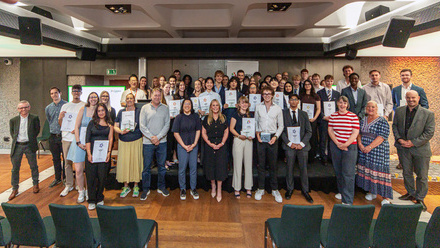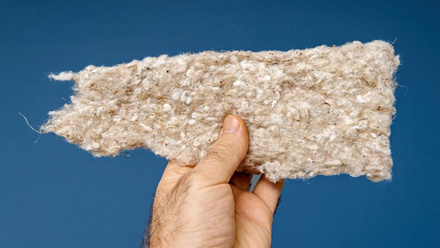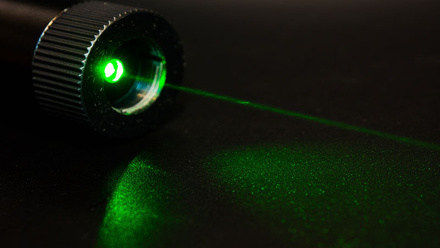Nerves of gold for surgical strike
Fabricated gold nanowires and soft electrodes could connect to the human nervous system to alleviate medical conditions.

The scientists in Sweden believe it could help treat epilepsy, Parkinson’s disease, paralysis or chronic pain.
To do this requires bypassing biomedical barriers, but researchers at Linköping University, Sweden, report they have developed high-performance materials that bring those medical aspirations nearer.
Doctoral Student Laura Seufert uncovered the potential when exploring how to synthesise long, thin, gold nanowires, so the team could embed them in an elastic material for soft, stretchable and electrically conductive electrodes.
'The classical conductors used in electronics are metals, which are very hard and rigid,' explains Klas Tybrandt, who leads the research group.
'The mechanical properties of the nervous system are more reminiscent of soft jelly. To get an accurate signal transmission, we need to get very close to the nerve fibres in question, but as the body is constantly in motion, achieving close contact between something that is hard and something that is soft and fragile becomes a problem.'
The main challenge lies in fabricating the nanowires to create a smooth shape, which is how Seufert struck on silver as a template to 'grow' the gold.
'The synthesis of silver nanowires in solution is a well-established process, which works well due to directional growth on preferential facets,' continues Tybrandt. 'As silver is the nanowire material that produces nanowires of the highest quality and aspect ratio, we decided to use silver [to make] gold nanowires.'
Pure silver, however, presents a problem of its own. While its properties make it a suitable material to create stretchable conductors – and it is highly conductive – it is not very stable and can leak toxic ions, note the researchers, posing a significant health risk.
To get around this – and to avoid inducing defects in the process that can break the nanowires into fragments – the team made silver-gold alloy nanowires before displacing the silver with gold to achieve >99% pure gold nanowires of the intended length.
They have combined the gold nanowires with a very soft silicone rubber, similar to what is already used in breast implants.
'The main challenge when developing gold-nanowire-silicone composites was to form high quality and defect-free composites,' explains Tybrandt.
'By filtering down the gold nanowires on a filter membrane, the resulting gold nanowire film can be cleaned by deionised water, which removes any residues from the synthesis. The clean gold nanowire film is then transferred to the soft silicone substrate and embedded in a top silicone layer, thereby creating a highly conductive and defect-free gold nanowire layer within the soft silicone.'
The researchers have collaborated with colleagues in the Department of Biomedical and Clinical Sciences to test the fabricated microelectrodes on rats. They report it can stimulate the rodent’s nerve and capture nerve signals.
The nanomaterial’s stability was then assessed using accelerated lifetime analysis, which, Tybrandt explains, 'is based on the principle that chemical degradation processes can be sped up at elevated temperatures'.
Under lab test conditions, the results show the nanomaterials continue to function after an accelerated time that corresponds to three years.
The next step is to refine and modify the nanomaterial and processes to create soft electrodes that record individual neurons.
'The miniaturisation of nanocomposites has many challenges, but we have recently found a way to achieve feature sizes below 10µm, which is smaller than a neuron,' he concludes. '[We’ll then] make this into implants that can record and stimulate neural tissue with high precision.'







